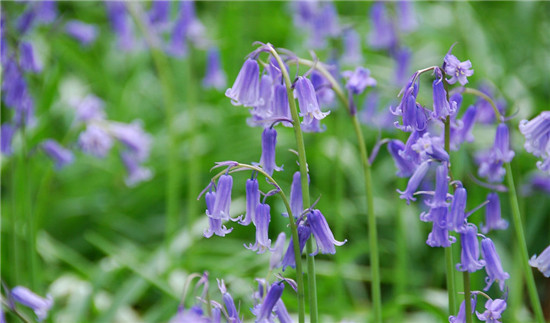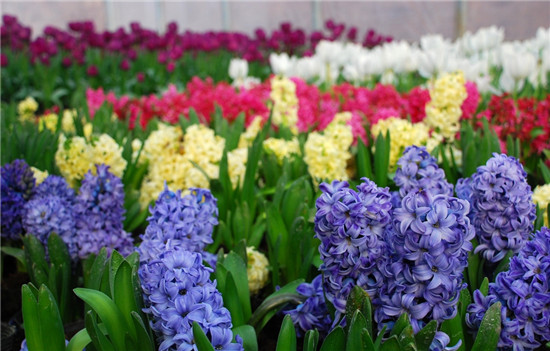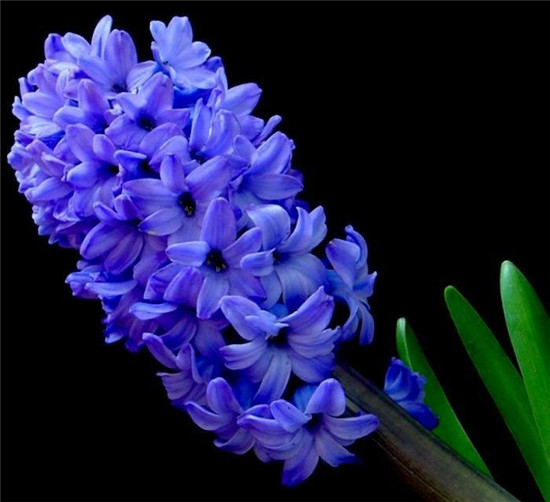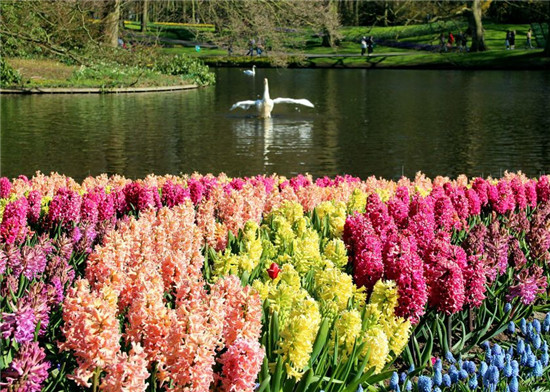What are the legends of hyacinth
Hyacinth is native to southern Europe and Asia minor, and is most cultivated in Holland. What is the flower language of hyacinth? are there any beautiful legends of hyacinth? Let's go and have a look.

Hyacinth is also called foreign daffodil or colorful daffodil. Like warm and humid winter, cool summer slightly dry, sunny or semi-overcast environment. Like fertilizer, suitable for fertile, well-drained sandy loam, avoid too wet or sticky soil.
Hyacinth bulbs have the habit of dormancy in summer, take root in autumn and winter, sprout in early spring, blossom in March, and wilt in early June.
During the growth of hyacinth, the root growth of bulb was the best when the temperature was 2-6 ℃. The optimum temperature for bud germination is 5-10 ℃, the optimum temperature for leaf growth is 5-12 ℃, and the most favorable temperature for budding and flowering is 15-18 ℃. The storage temperature of bulb is 20-28 ℃, and the optimum storage temperature is 25 ℃, which is the most ideal for flower bud differentiation. Can withstand short-term frost.
Hyacinth is a perennial herb. Bulb ovate, with membranous epidermis. Leaves 4-8, narrowly lanceolate, fleshy, with grooves, green and glossy. Fleshy stems, slightly higher than leaves, racemes terminal, 5-20 flowers, laterally or downward inclined, funnel-shaped, perianth tube long, base dilated, lobes oblong, anti-curly, flowers in purple, white, red, yellow, pink, blue and other colors, there are double flowers, large flowers, early flowers and polyploid varieties.

The legend of hyacinth
There is a legend in ancient Greek mythology that Hyacinthus, the grandson of Zeus, was a Greek plant god and a handsome young man. The sun god Apollo and the west wind god Zefelus were very close to him, but Heisinthers was only close to Apollo, and they went fishing, hunting and all kinds of sports together, and the west wind god was very jealous.
Once Apollo threw a discus with Heicinthers. Apollo threw it first, and Heicinthers waited. The West Wind took the opportunity to change the course of the discus and blew it to Heicinthers, which broke his forehead. Apollo did everything he could to save Heicinthers' life, but to no avail. A hyacinth grew on the blood-stained land, and the sun god named it Hyacinthus in memory of his friends.

The flowery language of hyacinth
Hyacinth blossoms about every year from March to April, usually from March to April. After the flowering period of hyacinth, if you want to bloom again, you need to cut off the moribund flowers. So hyacinth also represents the love of rebirth, forget the sadness of the past and start a new love. Hyacinth is a token of the festival between lovers, hyacinth flower language or "firm and fixed", perhaps, this is the eternal note of love.
Europeans have a special feeling for hyacinth. Venus, the goddess of beauty and love, likes to collect the dew attached to the hyacinth petals to make the skin more beautiful and smooth. In Britain, blue hyacinth has always been an indispensable symbol of the bride's purity in the wedding bouquet or decorated flowers, hoping to bring happiness. Hyacinth also symbolizes "everlasting remembrance". Europeans and Americans often carve hyacinth patterns on the tombstones of their relatives to show "everlasting remembrance".

These are all the contents of the legends of hyacinth that I summarize for you. I hope this article can help you. Please continue to follow us.
Related
- Wuhan Hospital Iron Tree Blooming Result Was Instantly Frightened by the Gardener Master
- Which variety of camellia is the most fragrant and best? Which one do you like best?
- What is the small blue coat, the breeding methods and matters needing attention of the succulent plant
- Dormancy time and maintenance management of succulent plants during dormancy
- Minas succulent how to raise, Minas succulent plant pictures
- What are the varieties of winter succulent plants
- How to raise succulent plants in twelve rolls? let's take a look at some experience of breeding twelve rolls.
- Attention should be paid to water control for succulent plants during dormant period (winter and summer)
- Watering experience of twelve rolls of succulent plants
- Techniques for fertilizing succulent plants. An article will let you know how to fertilize succulent plants.



